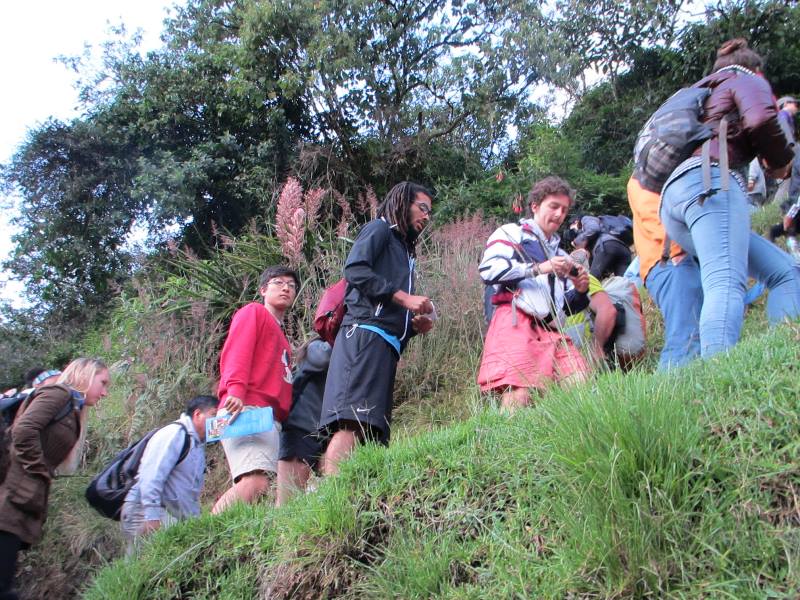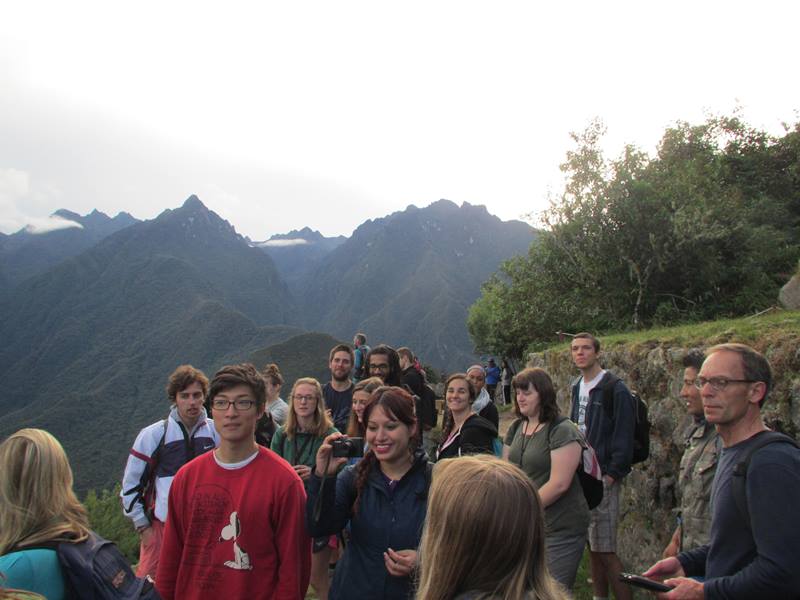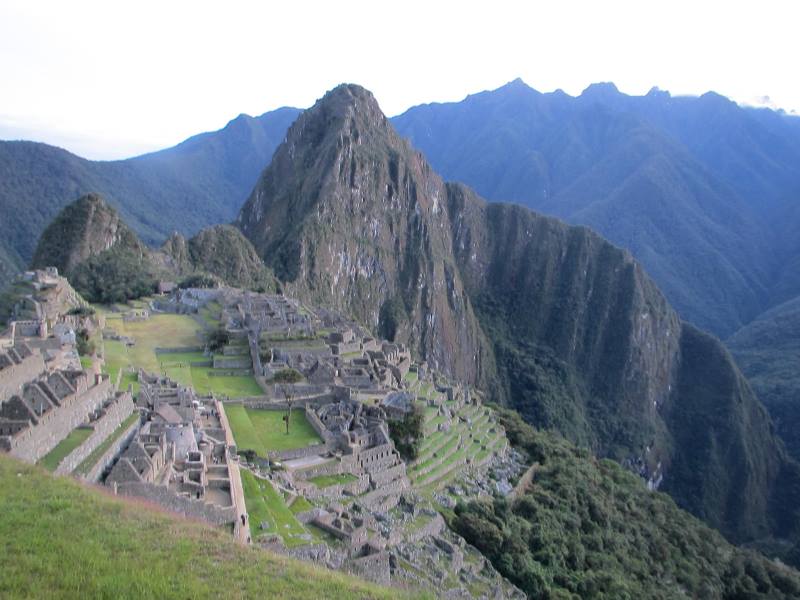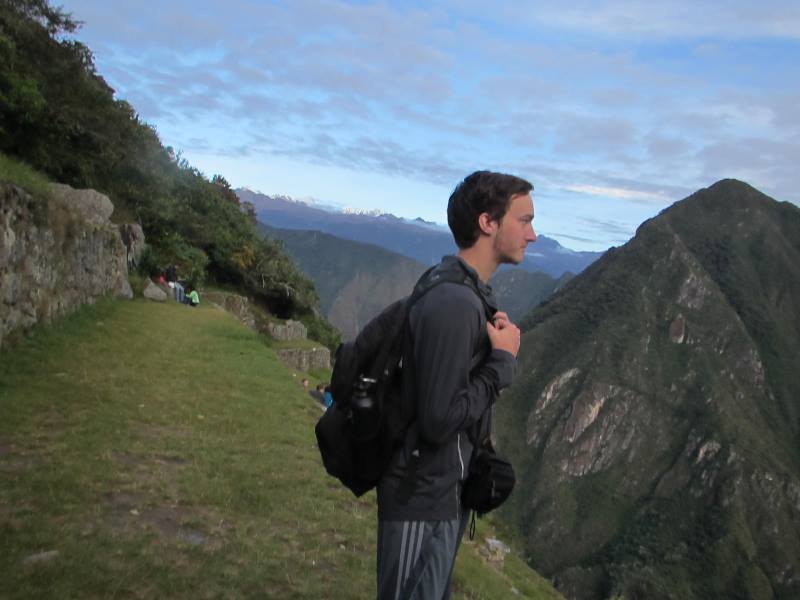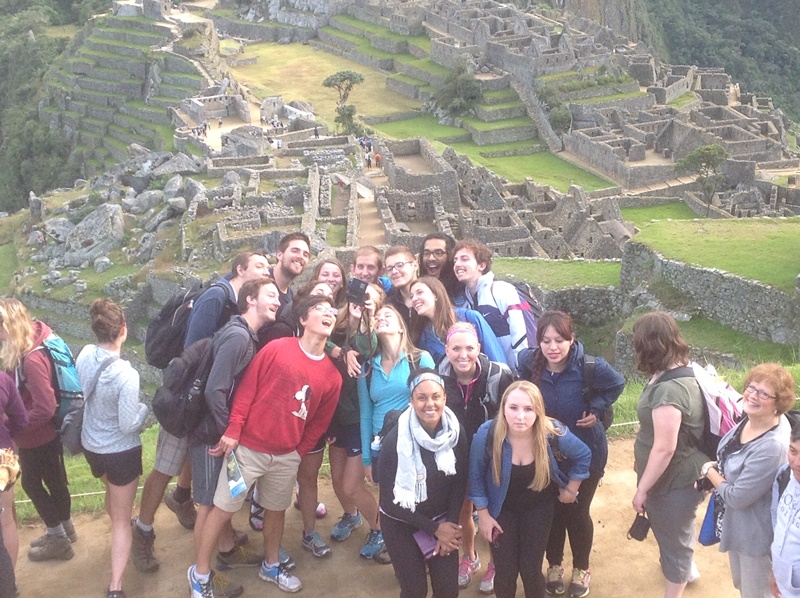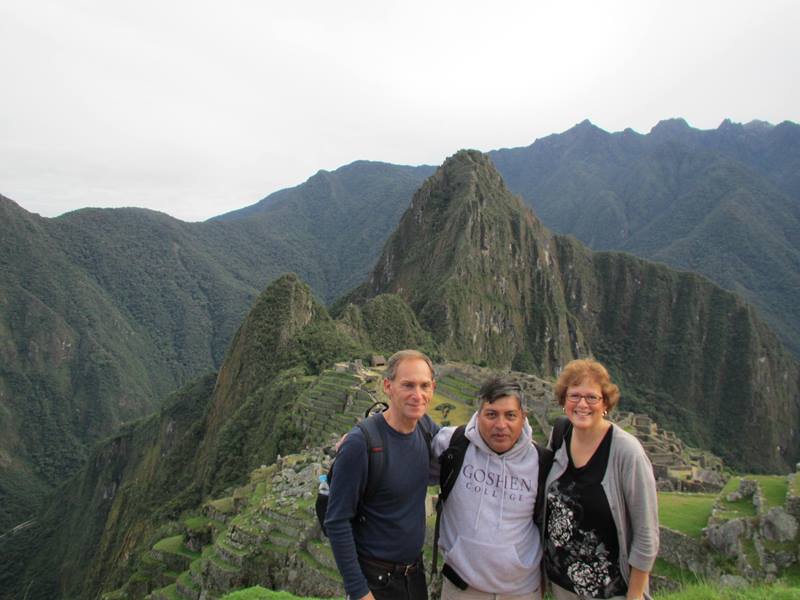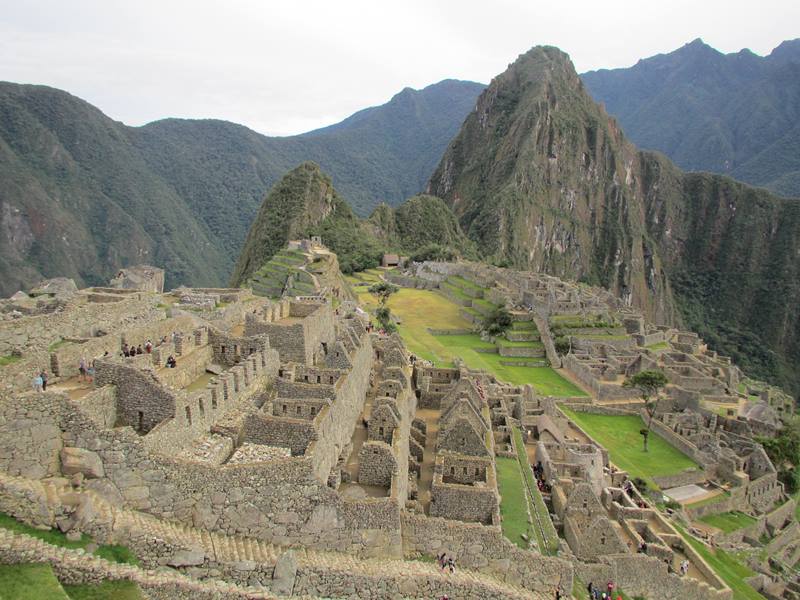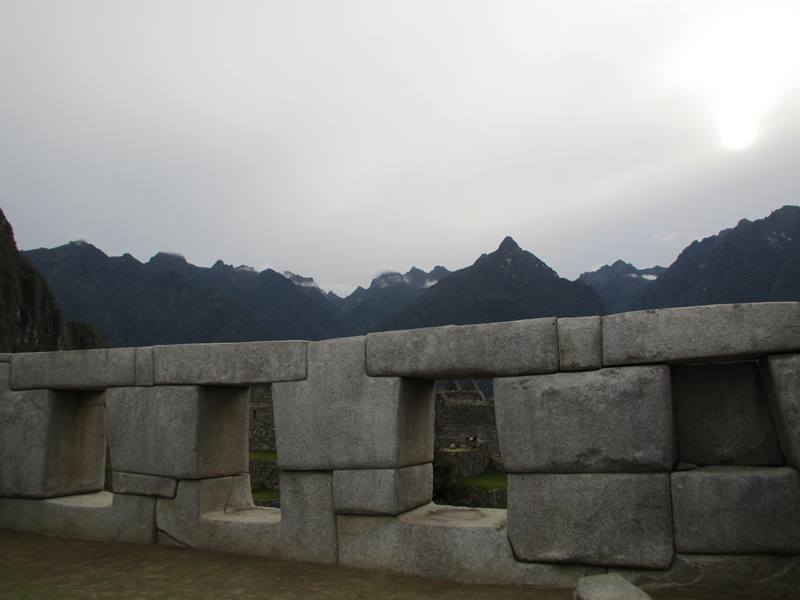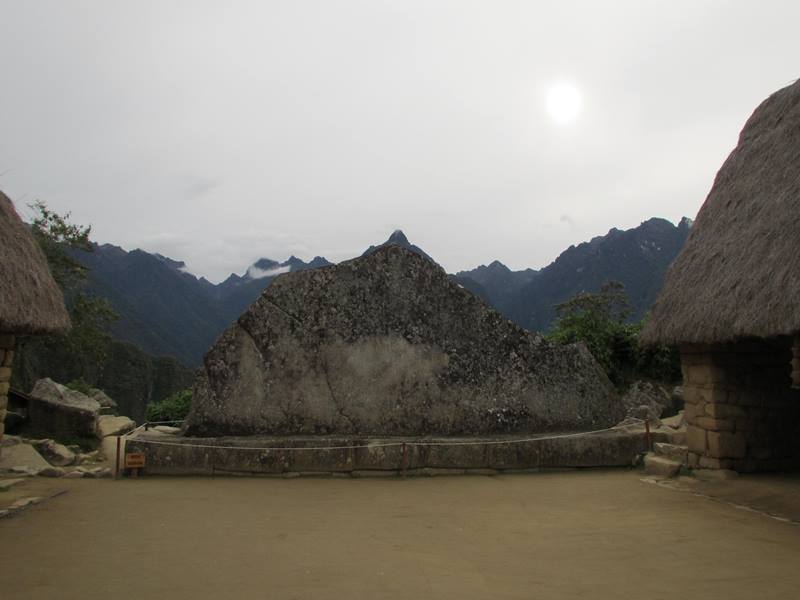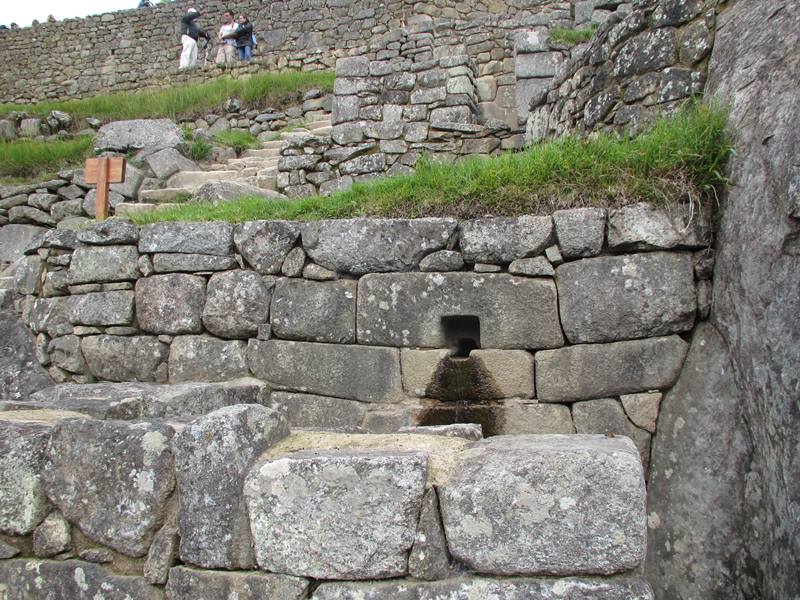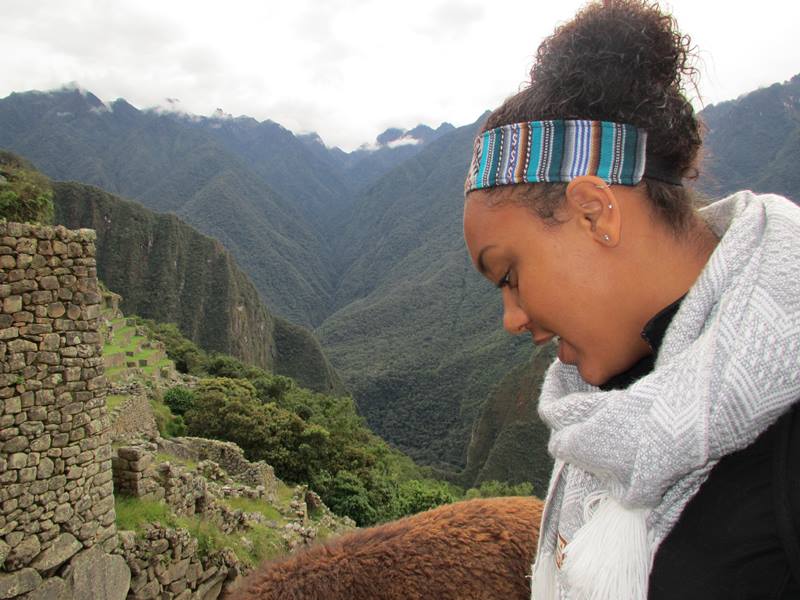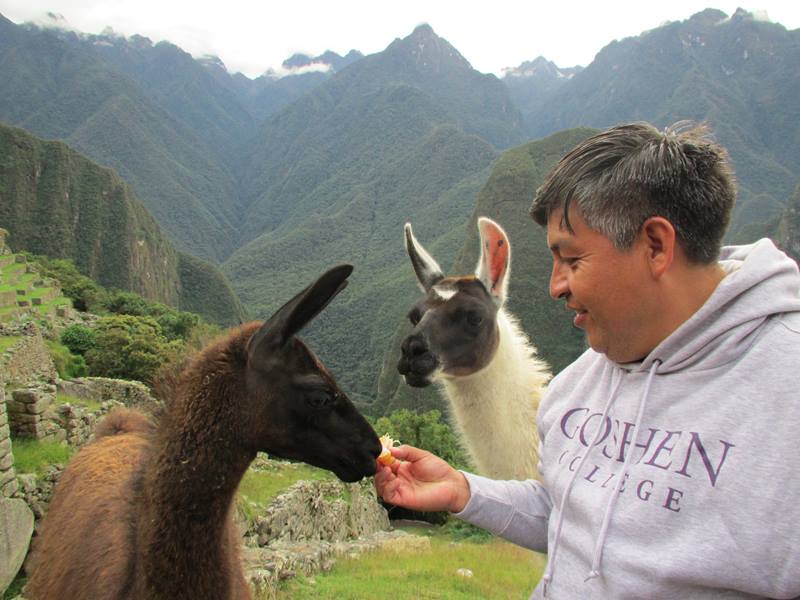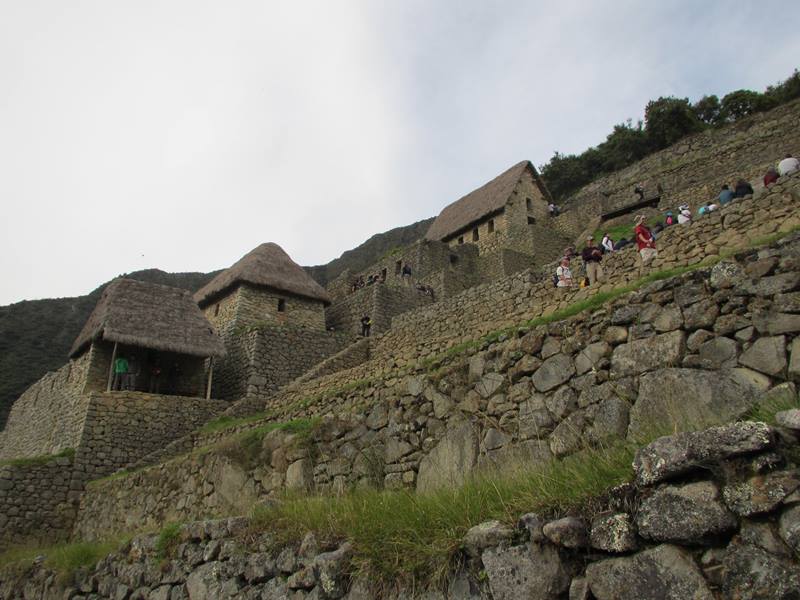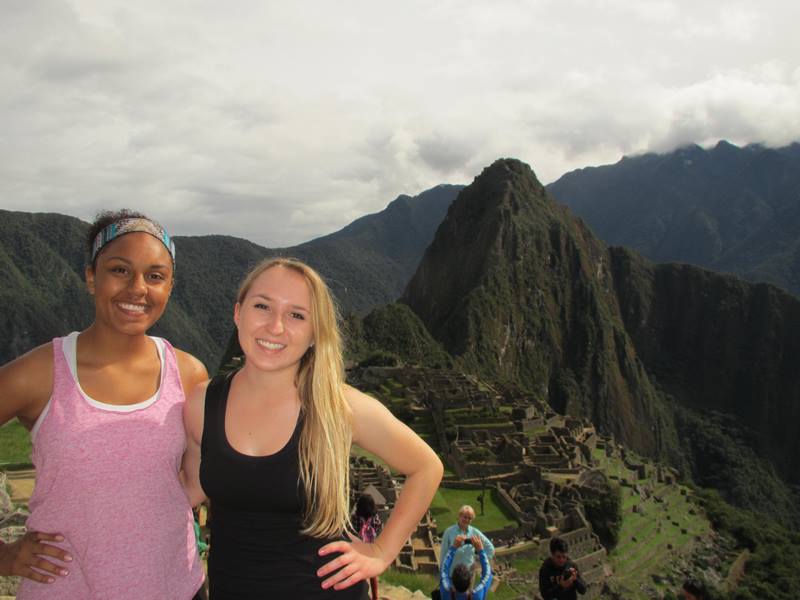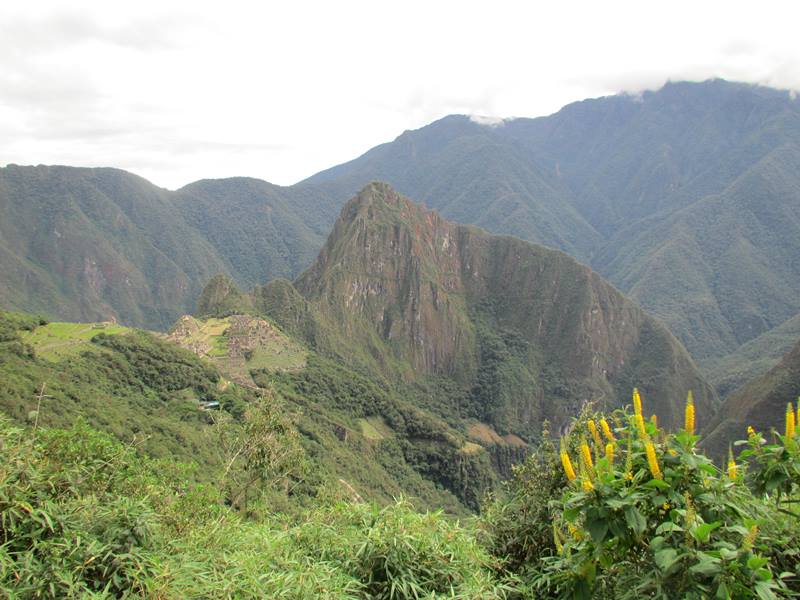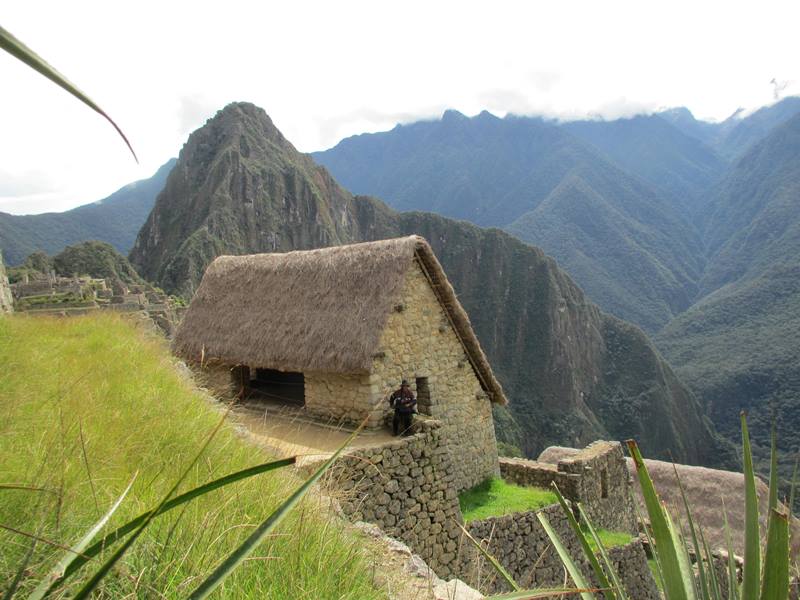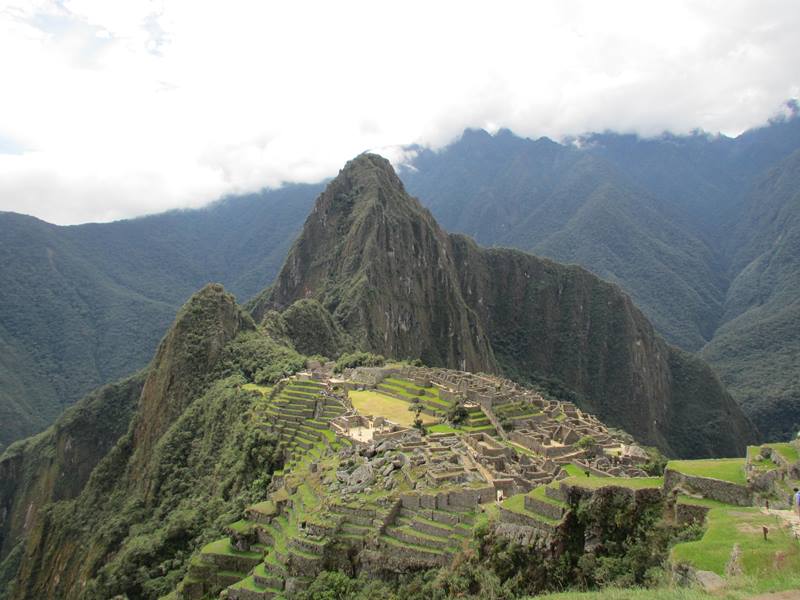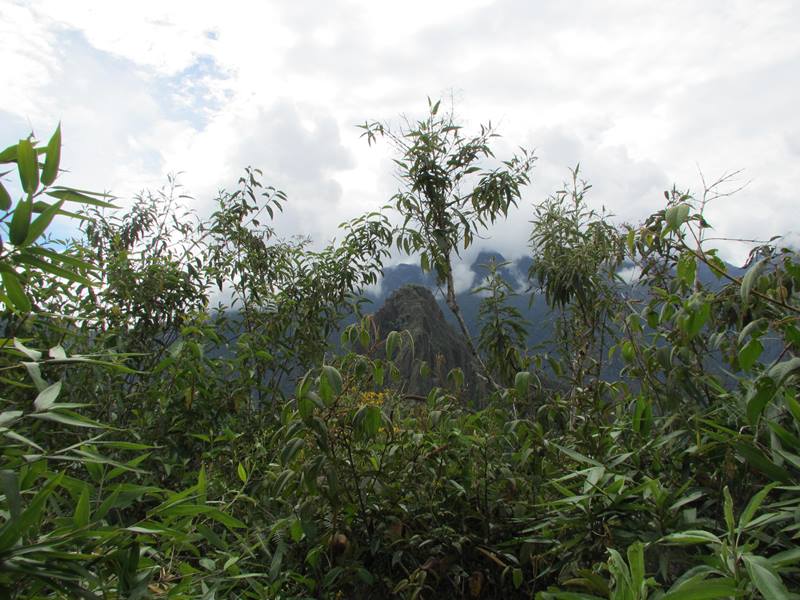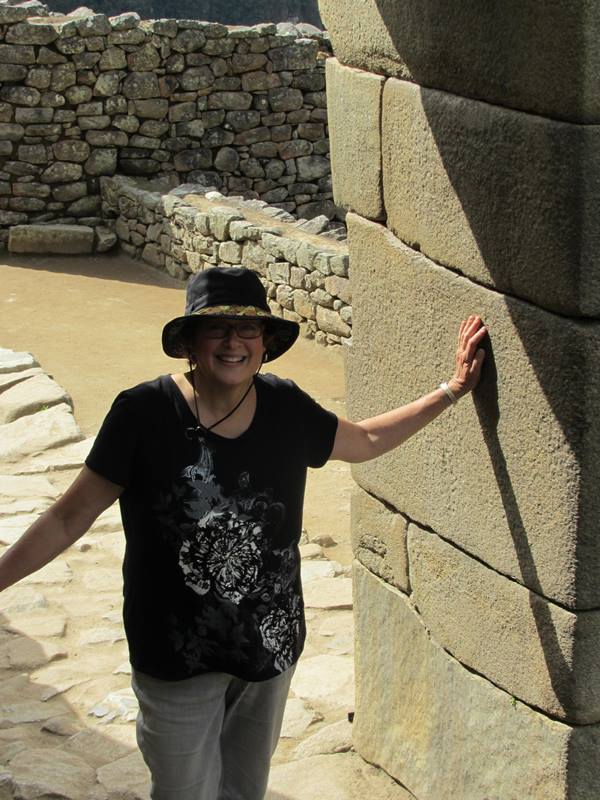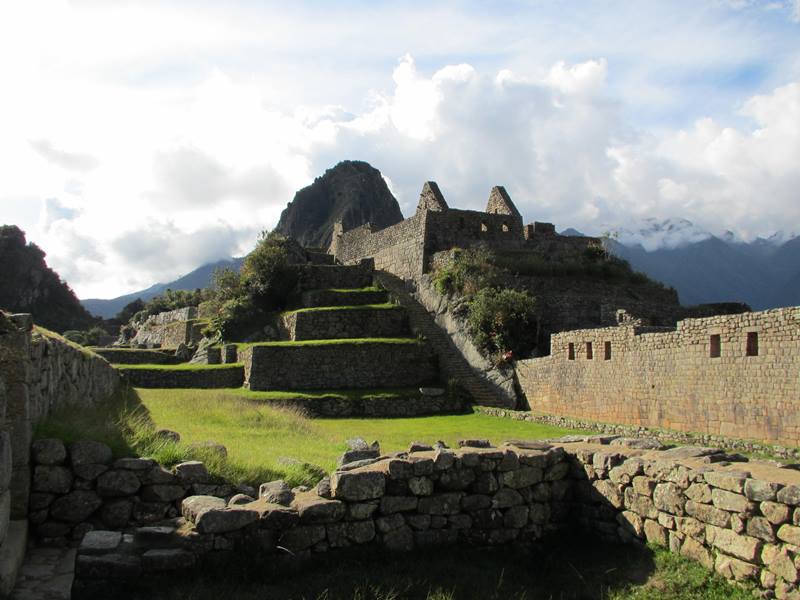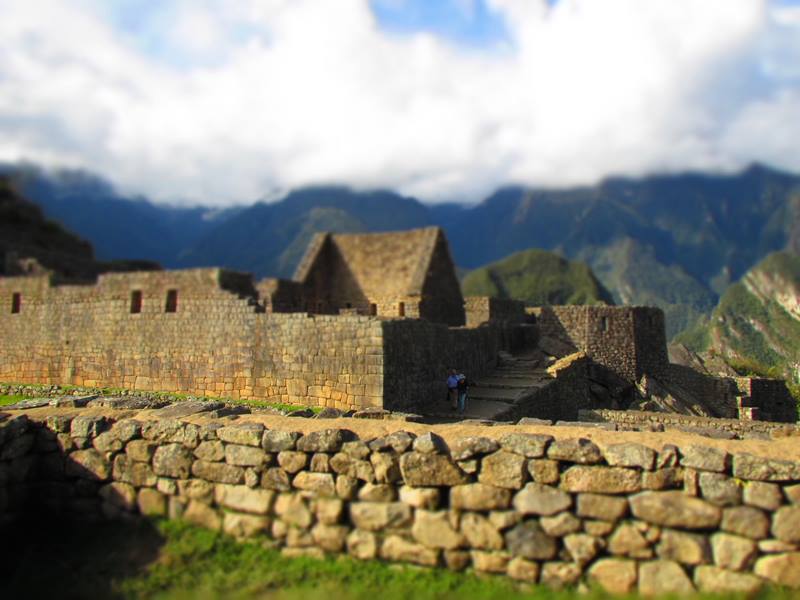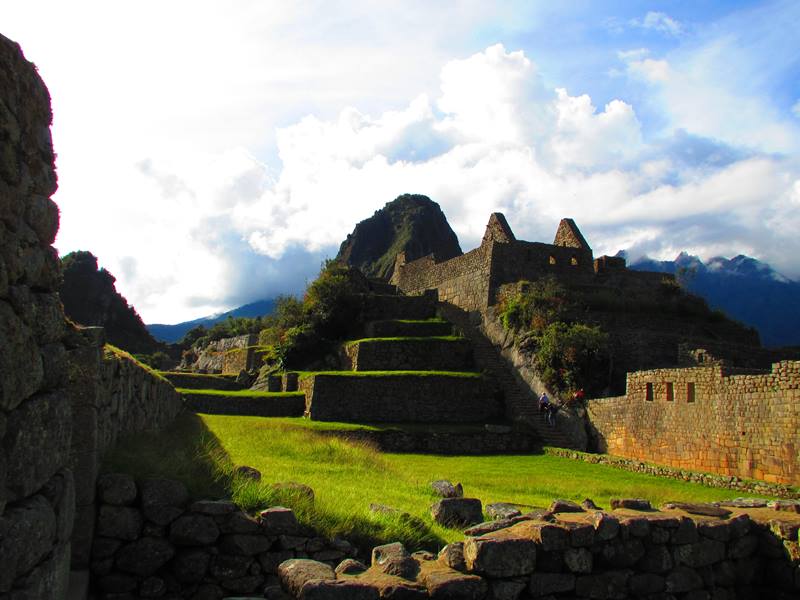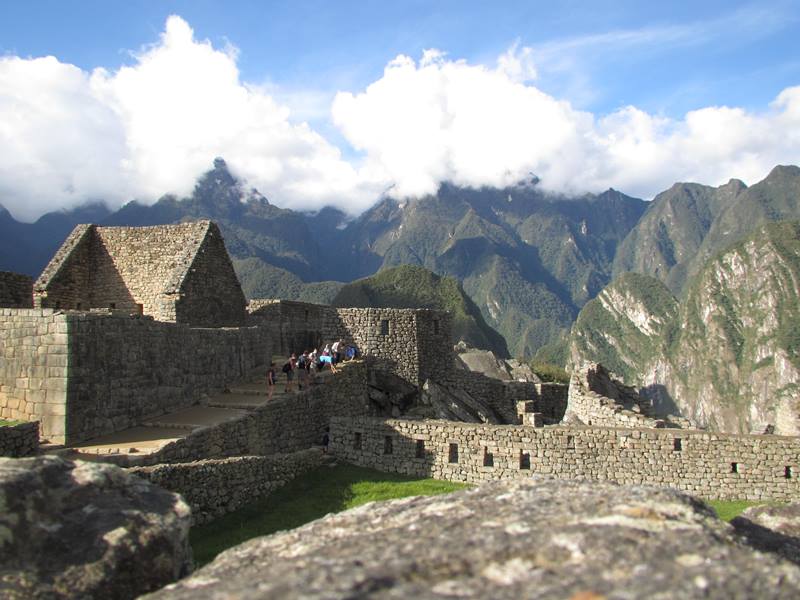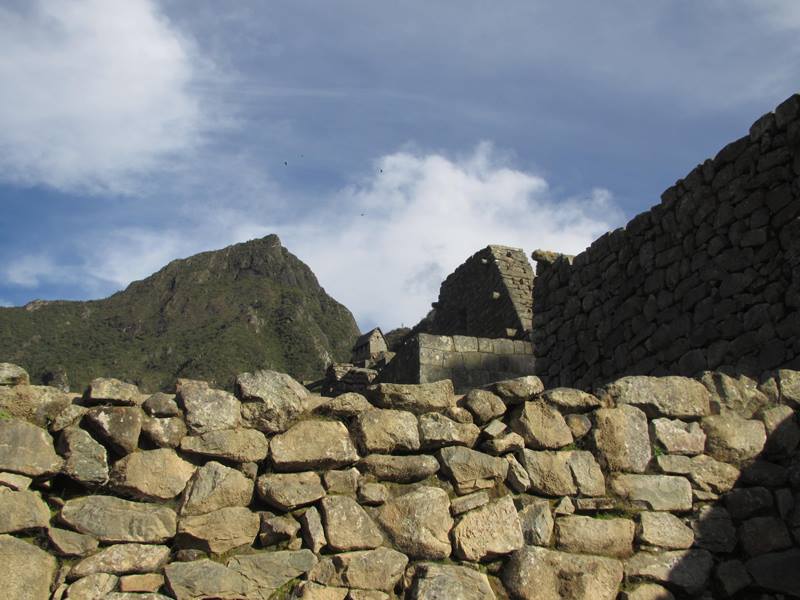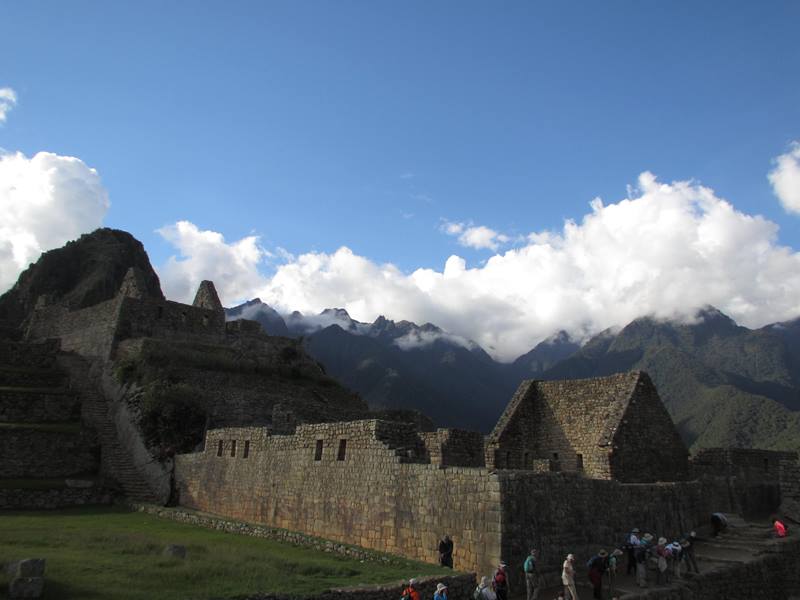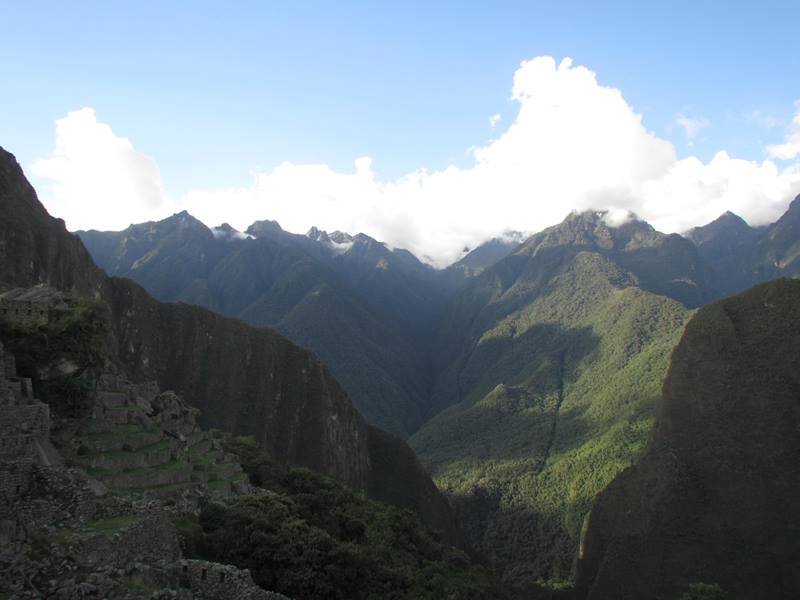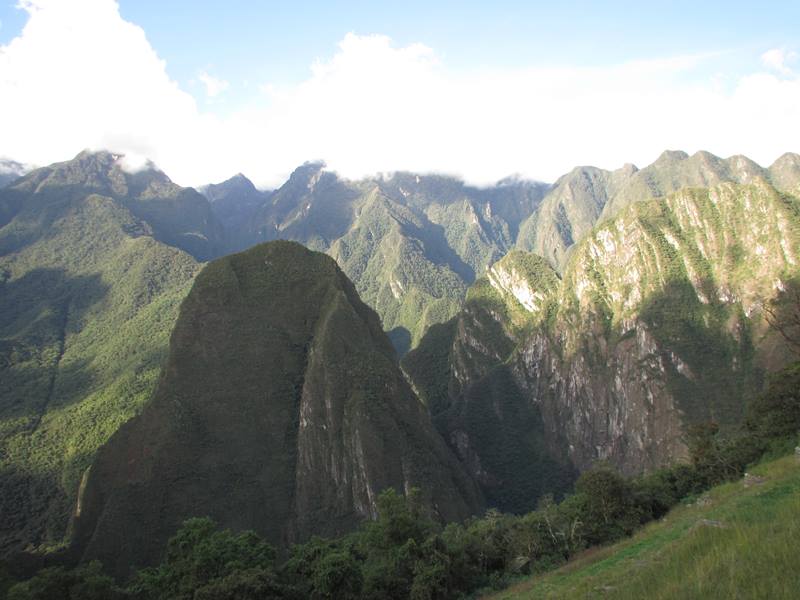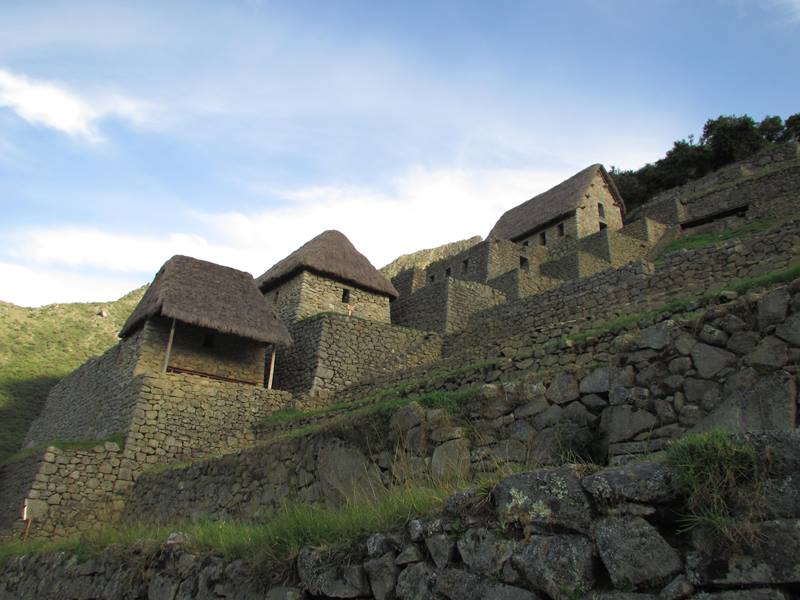Arriving Early and Staying Late: On Retreat at Machu Picchu

By Karen and Duane Sherer Stoltzfus
Peru SST Co-Directors, 2014-2015
On the evening before we visited Machu Picchu, we talked about how we wanted to make the most of the chance to see this mountaintop retreat; few people have this opportunity, and for nearly all of those who do, it’s once in a lifetime. We scheduled a light breakfast for 5:30 a.m. (bread, tea and coffee) to be ready to leave the hostel by 6.
We quickly crossed the plaza in the faint light of dawn and walked to the bus loading point, just a block away. We made the climb to Machu Picchu, a series of steep switchbacks, in less than half an hour.
Rubén led us on an efficient tour of Machu Picchu, including time for photos on the terraces overlooking this masterpiece of Incan architecture. We looked down on the Temple of the Sun, the Room of the Three Windows, the ceremonial baths and the vast residential and agricultural complexes — all bathed in sun.
Machu Picchu, as the author of one of our textbooks noted, was like a Camp David for Incan royalty, a place to get away from the crowds and the stress; it was also a religious center where festival days and astronomical events were celebrated. The site includes about 200 buildings. In the 15th century, the site may have been a bustling retreat for 500 people at a time, with the Incan leader Pachacuti holding court.

For the first couple of hours, Rubén provided a introductory tour. He explained that the American professor and adventurer Hiram Bingham made the remote site known to the outside world, in 1911, through his famed expeditions, but that we should qualify references to him as the scientific discoverer of Machu Picchu. Local people knew what was there, if not its implications.
We were mindful of the time since we had tickets to make a separate climb up Huayna Picchu — a climb that we had to begin between 7 and 8 a.m. Huayna Picchu, a peak that towers above the Machu Picchu complex, is restricted to 400 climbers each day. Half the climbers are permitted access between 7 and 8 a.m., and half between 10 and 11 a.m. That division limits congestion on the narrow, steep trail.

Most students in the group reached the summit of Huayna Picchu and stayed for a while, sunning on the rocks. Several students got an early start with some of the other featured trails at Machu Picchu, including the Sun Gate, which offers a complementary panoramic view of the “Lost City of the Incas.”
Students had time through the afternoon to explore the city and also walk a third trail, to the Incan Bridge. (A twenty-foot gap was left in this section of the carved cliff edge, over a 1,900 feet drop, that could be bridged with two tree trunks, otherwise leaving the trail impassable to outsiders).
If they wished, and most students did, they could stay at the retreat until closing time at 5. While a few caught one of the last buses down the mountain, most students chose to walk, about an hourlong hike. We enjoyed supper together and then boarded the train bound for Ollantaytambo, arriving at the hostel around midnight.

